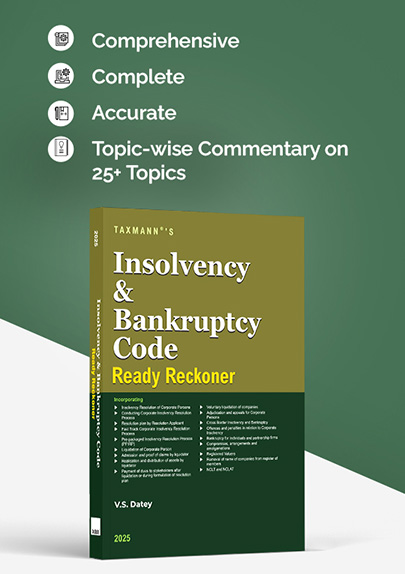[Opinion] Corporate Financial Guarantees – A Technical Overview Under Ind AS 109
- News|Blog|Account & Audit|
- 3 Min Read
- By Taxmann
- |
- Last Updated on 19 February, 2025
CA Siddharth Patel – [2025] 171 taxmann.com 453 (Article)
1. Introduction
In today’s dynamic financial landscape, corporate financial guarantees serve as a pivotal tool. Corporate financial guarantees are commitments made by companies to enhance the creditworthiness of borrowers, typically within a corporate group. These guarantees enable subsidiaries or related entities to obtain financing on more favourable terms.
Considering the evolving and rapidly changing financial landscape, where corporate financial guarantees have become increasingly prevalent, it is crucial to understand these instruments and their accounting treatment under Ind AS 109 to ensure accurate financial reporting and compliance.
2. Topics Covered in This Article:
This article provides a comprehensive analysis of corporate financial guarantees, including:
1. What Are Corporate Financial Guarantees?
2. The Rationale for Accounting for Corporate Financial Guarantees
3. Accounting Treatment Under Ind AS 109
3.1. Initial Recognition
3.2. Subsequent Measurement
4. Accounting in the books of
4.1. Guarantor’s and
4.2. the Beneficiary’s
5. GST Implications on Corporate Financial Guarantees
6. Conclusion
3. What Are Corporate Financial Guarantees?
A corporate financial guarantee is a contractual commitment whereby the guarantor promises to meet the payment obligations of a borrower if that borrower defaults. This commitment not only strengthens the borrowing entity’s credit profile but also plays a critical role in structured financing, particularly in group arrangements where a parent company may provide support to its subsidiary. In current market conditions, such guarantees are increasingly important for facilitating access to capital under more advantageous terms.
Example:
Consider a multinational manufacturing company, ABC Industries Ltd., which has a wholly owned subsidiary, XYZ Manufacturing Pvt. Ltd., operating in a developing market. XYZ Manufacturing seeks a loan of Rs.10 Crores from a bank to expand its production capacity. However, due to its relatively limited financial history and weaker credit standing, the bank is hesitant to approve the loan on favorable terms.
To strengthen the subsidiary’s credit profile, ABC Industries Ltd. provides a corporate financial guarantee to the lender, assuring that it will fulfill XYZ Manufacturing’s repayment obligations in case of default. As a result, the bank offers a lower interest rate and a longer repayment period, significantly improving the subsidiary’s financial flexibility.
This guarantee enables XYZ Manufacturing to secure the necessary funding for expansion while minimizing borrowing costs, showcasing how corporate financial guarantees enhance access to capital in structured financing.
4. The Rationale for Accounting for Guarantees
Even if no immediate cash outflow occurs, a corporate financial guarantee must be recorded because it represents a contingent liability—a potential obligation that depends on future events. The moment a company issues a financial guarantee, it assumes a legal and financial responsibility to step in if the borrower fails to meet its obligations.
From an accounting perspective, failing to recognize this potential risk would lead to an understatement of liabilities, which in turn could misrepresent the company’s financial health and risk exposure. This is particularly important for investors, lenders, and regulators who rely on financial statements for decision-making.
Additionally, accounting standards such as IFRS 9, ASC 460 (U.S. GAAP) and Ind as 109 require companies to recognize a financial guarantee liability at its fair value upon issuance and assess potential obligations periodically. If the borrower’s financial condition deteriorates, the likelihood of default increases, and the guarantor may need to adjust the liability in its financial statements accordingly.
Click Here To Read The Full Article
Disclaimer: The content/information published on the website is only for general information of the user and shall not be construed as legal advice. While the Taxmann has exercised reasonable efforts to ensure the veracity of information/content published, Taxmann shall be under no liability in any manner whatsoever for incorrect information, if any.

Taxmann Publications has a dedicated in-house Research & Editorial Team. This team consists of a team of Chartered Accountants, Company Secretaries, and Lawyers. This team works under the guidance and supervision of editor-in-chief Mr Rakesh Bhargava.
The Research and Editorial Team is responsible for developing reliable and accurate content for the readers. The team follows the six-sigma approach to achieve the benchmark of zero error in its publications and research platforms. The team ensures that the following publication guidelines are thoroughly followed while developing the content:
- The statutory material is obtained only from the authorized and reliable sources
- All the latest developments in the judicial and legislative fields are covered
- Prepare the analytical write-ups on current, controversial, and important issues to help the readers to understand the concept and its implications
- Every content published by Taxmann is complete, accurate and lucid
- All evidence-based statements are supported with proper reference to Section, Circular No., Notification No. or citations
- The golden rules of grammar, style and consistency are thoroughly followed
- Font and size that’s easy to read and remain consistent across all imprint and digital publications are applied






 CA | CS | CMA
CA | CS | CMA


